Global cotton looks to China, and Chinese cotton looks to Xinjiang. Xinjiang long-staple cotton has excellent quality and large output, and is in short supply all year round. According to data from the National Bureau of Statistics, Xinjiang’s total cotton output reached 5.161 million tons in 2020, accounting for 87.3% of the country’s total cotton output and accounting for more than 20% of the world’s cotton output. Why is Xinjiang cotton top-notch in the world? Six reasons to tell you!
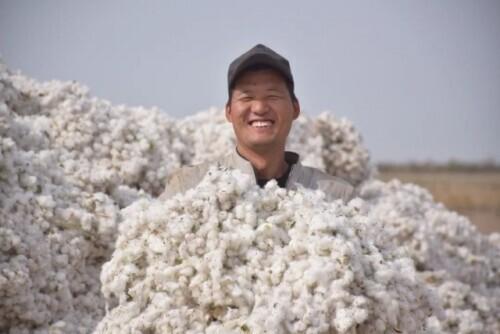
Chen Xiaojiang, an employee of the Sixth Division of the Xinjiang Corps, has been growing cotton for 17 years. Last year, he planted 50 acres with a yield of 490 kilograms and an income of nearly 100,000 yuan. Photo courtesy of the Propaganda Department of the Corps
Climate: Unique light and heat conditions
On October 5, in the 500-acre cotton field of the 13th Company of the 144th Regiment of the Eighth Division, a cotton picker The cotton machine is shuttled in the white waves of cotton, seize the time to harvest a good cotton harvest.
Li Xueyuan, a researcher at the Economic Crop Research Institute of the Xinjiang Academy of Agricultural Sciences, said that Xinjiang has unique natural conditions. First, there is sufficient sunshine, which can last for more than 16 hours, so plants can absorb sufficient sunshine; second, the temperature difference between day and night Large, plants can fully carry out photosynthesis during the day and inhibit growth at night, so more energy will be applied to the fruits; third, rainfall is scarce and the climate is dry, which can evaporate a large amount of water from the plants, and the cotton fiber of cotton has good flexibility; The long frost-free period provides sufficient growth time for cotton growth.
Thanks to the unique light and heat conditions, Xinjiang is also the only long-staple cotton producing area in my country. According to Chen Jiajia, a professor and doctoral supervisor at the College of Agriculture of Xinjiang Agricultural University, 550,000 acres of long-staple cotton will be planted in the Aksu region of Xinjiang in 2020, accounting for more than half of Xinjiang. Xinjiang long-staple cotton’s softness, gloss, skin-friendliness, air permeability, elasticity and other indicators far exceed those of ordinary cotton.
Breeding: Create a batch of excellent germplasm resources
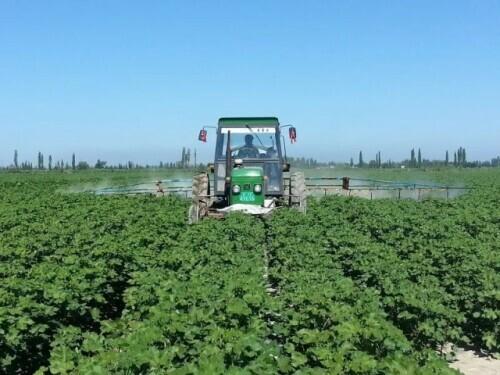
Experts from Xinjiang Agricultural University and other universities have long been committed to research on cotton breeding and other work, and have also played a role in improving cotton quality.
The Chen family said that taking the breeding and promotion of “Xinnong Damian No. 4” as an example, it improved existing cotton varieties and passed various environmental tests such as disease resistance, drought resistance, and salt-alkali tolerance. Identify, evaluate and screen to create a batch of excellent germplasm resources that are resistant to high temperature, salt and alkali, cold and suitable for machine harvesting, strengthen protection and utilization, and continuously replenish the cotton germplasm resource bank.
Planting: Overcoming key technical problems in multiple links
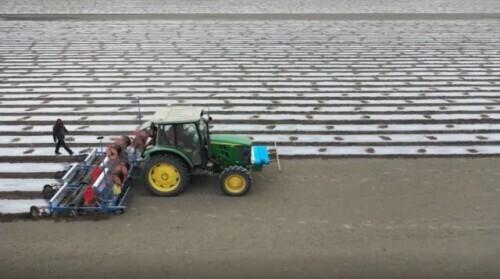
The farming system in Xinjiang is one crop per year. According to the requirements of the cotton growth process and the sowing date rules, early sowing is carried out at an appropriate time. Cultivation techniques such as dense branches and early promotion can increase cotton yield. At the same time, plastic film covering is used to realize drip irrigation under the film to improve water utilization in Xinjiang cotton areas.
Xinjiang’s cotton planting technology is also making continuous breakthroughs. In 2020, Xinjiang’s patented cotton planting technology won the “Africa Innovation Week” Invention Gold Award. Mao Shuchun, the chief expert on cotton cultivation in the country, introduced that the “Innovation and Application of Key Technologies for High-yield and Efficient Oasis Cotton Production” submitted by the Economic Crop Research Institute of the Xinjiang Academy of Agricultural Sciences has systematically overcome key technical problems in many aspects of the high-yield and efficient production of oasis cotton. The technology has reached the international leading level.
Harvest: Mechanical picking rate has reached 69.83%
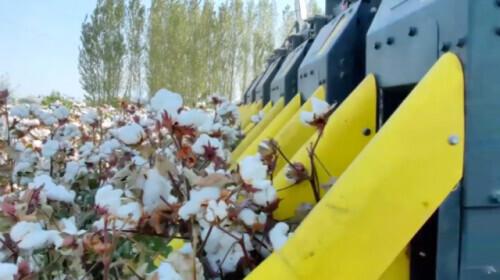
Xinjiang has concentrated cotton fields, a large planting scale, and a high degree of mechanization. In recent years, the mechanized cotton harvesting area has exceeded 100% annually on average. Growth rate of 10,000 acres. According to 2020 data released by the Xinjiang Agriculture Department, Xinjiang’s cotton mechanical picking rate has reached 69.83%. According to data from the Corps Statistics Bureau, the Corps has 2,760 cotton picking machines, with a machine-picked cotton area of 11.8 million acres, and a cotton machine-picked rate of 90.9%.
With the transformation of production methods and technological progress, Xinjiang’s cotton production science and technology contribution rate has increased from 38% before reform and opening up to 58%, and all aspects of cotton production, seed management, and harvesting have been fully mechanized.
Industrial chain: large-scale production has significant benefits
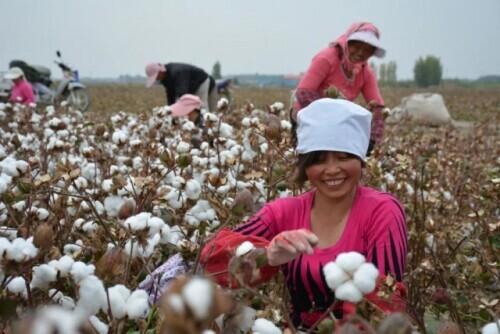
He Jinshou, an employee of the 14th Company of the 144th Regiment of the 8th Division, planted 50 acres of cotton. Looking at the harvest of cotton, He Jinshou smiled broadly. Open mouth from ear to ear. (Zhang Xiaoqi, 144th Regiment of the Eighth Division)
Li Xueyuan said that with the support of the national cotton industry strategic planning and various policies, Xinjiang has formed my country’s largest cotton production base, processing base, and textile and clothing export base. Among them, the scale of textile production has reached more than 20 million spindles, and textile employment has exceeded 1 million people. With the integrated development of primary, secondary and tertiary industries, cotton’s economic contribution as the pillar of Xinjiang’s economy has become more prominent.
The Chen family introduced that Xinjiang’s cotton industry has contributed 70 billion yuan to the economy. More than 65% of the family income of cotton farmers in the main cotton-producing areas comes from cotton. The cotton industry can employ 1 million people. Cotton has become the largest industry in Xinjiang. Economic pillar industry.
Quality: All indicators exceed national standards, “both internal and external repairs”
On September 22, at the cotton processing factory of the 144th Regiment of the Eighth Division, a forklift inspected new cotton sold by employees. Unloading the truck.
Yu Yu, a researcher at the Xinjiang Academy of Agricultural Sciences, introduced that there are three main indicators to measure the quality of cotton: color grade refers to the type and grade of cotton color, and the standard fiber length grade is 28 mm. A difference of one millimeter is a difference. level; the micronaire value is divided into three levels: A, B, and C. It reflects the fineness of cotton fiber and is also an important indicator of cotton maturity.
Yu Yu said that in terms of cotton cultivation in Xinjiang, One obvious advantage brought by high-quality varieties, mature technology, and large-scale operations is the good uniformity of cotton and the good coordination of the above three important indicators, which guarantees the quality of Xinjiang cotton.
Li Xueyuan said that Xinjiang cotton has “both internal and external qualities” – high external grade, white color, good mercerization, excellent internal quality, long fiber, high strength, and suitable for spinning high-count yarns. Especially Xinjiang’s unique long-staple cotton, made of Clothes and quilts are warm, breathable and comfortable.
The Chen family said that Xinjiang long-staple cotton is of high quality and its fibers are soft and long, generally 33 to 39 mm and up to 64 mm in length, surpassing Egyptian cotton. It has high strength. According to relevant tests, all quality indicators of Xinjiang long-staple cotton exceed national standards.
I support Xinjiang cotton like this!
p>







